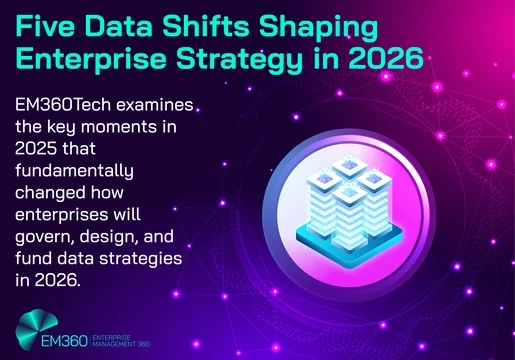In the world of business, understanding the customer journey is crucial for success. By knowing what customers are thinking at each stage of their journey with your business, you can create more relevant and targeted marketing messages, develop better products and services, and provide a more seamless and enjoyable customer experience.
But what even is a customer journey? In this article, we're delving deep into the meaning of the customer journey, exploring its various stages and providing real-world examples from different industries.

What is the customer journey? Definition
The customer journey is the process a customer goes through to purchase and use a product or service. It begins with the customer becoming aware of your brand and ends with them becoming a loyal customer or advocate.
The customer journey is not always linear, and customers may move back and forth between stages as they learn more about your product or service and make their purchase decisions.
It also depends heavily on the industry you’re working in and the product or service you’re offering, since this can impact the way the customer interacts with your brand and your product.
Why is the customer journey important?
Understanding the customer journey is important for businesses because it can help them improve the customer experience and increase sales.
By mapping and understanding the customer journey, businesses can engage with their customers at the right time and with the right message, making interactions more relevant and meaningful.
A happy customer is more likely to make a purchase and become a loyal customer, and having a solid grasp of the customer journey and improving the customer experience helps you improve brand loyalty and grow your customer base.
The stages of the customer journey

The customer journey is not a one-size-fits-all model; it varies from industry to industry and from one customer segment to another. However, a standard journey can be divided into five main stages:
- Awareness – this is the stage where the customer becomes aware of your brand and its products or services. This can happen through various channels, such as advertising, social media, search engines, or word-of-mouth.
- Consideration – once the customer is aware of your brand, they will begin to consider whether or not it is the right choice for them. This is where they will compare your products or services to those of your competitors and read reviews from other customers.
- Decision – this is the stage where the customer makes the decision to purchase your product or service. This decision is often influenced by a variety of factors, such as price, features, benefits, and the customer's overall experience with your brand.
- Post-purchase – once the customer has purchased your product or service, they will use it and evaluate their experience. This is where they will form an opinion about your brand and decide whether or not to purchase from you again in the future.
- Advocacy – if the customer is happy with their experience, they may become a brand advocate and recommend your products or services to others. This can happen through word-of-mouth, social media, or online reviews.
Examples of customer journeys
Understanding the theoretical framework of the customer journey is essential, but seeing it in action through real-world examples can provide deeper insights into how different businesses and industries leverage this concept.
Example 1: E-Commerce - Amazon
- Awareness: A customer browsing the internet encounters Amazon ads while searching for various products online.
- Consideration: The customer clicks on Amazon's link, explores product listings, reads customer reviews, and adds products to their shopping cart.
- Decision: After comparing prices and reading reviews, the customer decides to purchase a laptop.
- Post-Purchase: The laptop arrives on time, and the customer enjoys a seamless experience. In case of any issues, Amazon's customer support provides quick solutions.
- Advocacy: Pleased with their experience, the customer leaves a positive review, recommends Amazon to friends, and may join the Amazon Prime program for additional benefits.
Example 2: Hospitality - Marriott Hotels
- Awareness: A traveller researching accommodations for an upcoming trip comes across Marriott's website or mobile app.
- Consideration: The traveller explores different Marriott properties, reviews amenities, checks prices, and reads guest reviews.
- Decision: Impressed with the reviews and amenities, the traveller books a room at a Marriott hotel.
- Post-Purchase: During their stay, the traveller enjoys a comfortable room, excellent service, and various amenities. The hotel staff is attentive to any requests or concerns.
- Advocacy: Delighted with the experience, the traveller leaves a glowing review on a travel website, shares photos on social media, and recommends Marriott to fellow travellers.
Example 3: Software - Microsoft Office 365
- Awareness: A small business owner hears about Microsoft Office 365 from a colleague.
- Consideration: The business owner researches Office 365 online, watches demo videos, and reads case studies about other businesses benefiting from the software.
- Decision: Convinced of the benefits, the business owner subscribes to Office 365 for their company.
- Post-Purchase: Microsoft offers excellent customer support and resources to help the business owner get the most out of Office 365. Any issues or questions are addressed promptly.
- Advocacy: Satisfied with the software and Microsoft's support, the business owner recommends Office 365 to other business owners, becoming an advocate for the product.
These examples illustrate how the customer journey varies across industries and customer segments. In each case, the customer's path involves distinct stages, and the brand's ability to cater to the customer's needs at each stage significantly impacts the overall experience.
Creating a customer journey map
To effectively leverage the concept of the customer journey, businesses must map it out. Mapping the customer journey involves creating visual representations of the stages and touchpoints, which can help identify pain points, opportunities for improvement, and areas where personalization is most critical. Here's how to create a customer journey map:
- Identify Customer Personas. Start by understanding the different customer segments or personas your business serves. These are distinct groups of customers with different needs and behaviours.
- List Key Touchpoints. Identify all the touchpoints where customers interact with your brand. This includes your website, social media, email, phone calls, physical stores, and any other relevant channels.
- Map the Stages. Create a visual representation of the customer journey, beginning with awareness and ending with advocacy. For each stage, detail the customer's goals, emotions, and actions.
- Highlight Pain Points. As you map out the journey, identify pain points where customers may encounter challenges or frustrations. This can include slow website loading times, unclear product information, or poor customer service.
- Optimise the Journey. With a clear map in hand, prioritize areas for improvement. These improvements might involve website enhancements, better customer service training, or more personalized marketing campaigns.
Challenges of mapping the customer journey
While optimising the customer journey is crucial for businesses, there are common challenges that companies may encounter along the way. You need to be aware of these challenges and develop strategies to overcome them:
- Lack of Data. Insufficient customer data can hinder personalization efforts. To address this, businesses should invest in data collection and analysis.
- Inconsistent Customer Experience. Inconsistent experiences across different touchpoints can be frustrating for customers. Maintaining brand consistency is vital.
- Overwhelming Options. Too many options during the consideration stage can overwhelm customers. Businesses should guide customers with relevant information and recommendations.
- Inadequate Post-Purchase Support. Neglecting the post-purchase stage can lead to customer churn. Offering excellent post-purchase support is essential.
- Ignoring Negative Feedback. Negative feedback is an opportunity for improvement. Ignoring it can damage a brand's reputation.
- Failure to Adapt. Customer preferences and behaviour change over time. Businesses must adapt and update their customer journey strategies accordingly.
Final thoughts
The customer journey is not just a concept; it's a strategic framework for building lasting relationships with customers. By defining the stages, mapping the journey, and leveraging technology, businesses can create exceptional experiences that lead to customer
Remember that the customer journey is not static; it evolves as customer preferences change and technology advances. By defining the stages, mapping the journey, and leveraging technology, businesses can create exceptional experiences that lead to customer satisfaction, loyalty, and advocacy.







Comments ( 0 )